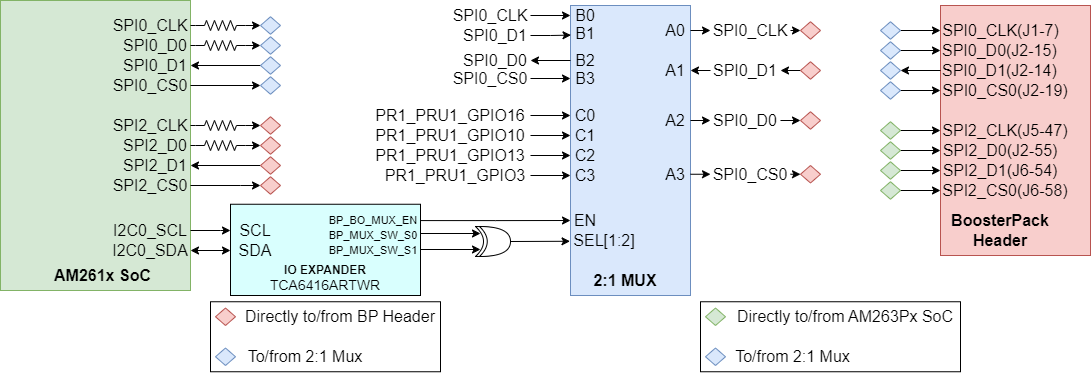SPRUJF1 November 2024 AM2612
ADVANCE INFORMATION
- 1
- Description
- Key Features
- 1LaunchPad Module Overview
-
2Hardware Description
- 3.1 Board Setup
- 3.2 Functional Block Diagram
- 3.3 GPIO Mapping
- 3.4 Reset
- 3.5 Clock
- 3.6 Memory Interfaces
- 3.7 Ethernet Interface
- 3.8 I2C
- 3.9 Industrial Application LEDs
- 3.10 SPI
- 3.11 UART
- 3.12 MCAN
- 3.13 FSI
- 3.14 JTAG
- 3.15 TIVA and Test Automation Pin Mapping
- 3.16 LIN
- 3.17 ADC and DAC
- 3.18 EQEP and SDFM
- 3.19 EPWM
- 3.20 USB
- 3.21 BoosterPack Headers
- 3Known Issues and modifications done on LP-AM261 RevE1
- 4Additional Information
- 5References
- 6Revision History
2.10 SPI
The AM261x LaunchPad maps two SPI instances (SPI0, SPI2) from the AM261x SoC to the BoosterPack Headers. Series termination resistors are placed near the SoC for each SPI clock and SPI D0 signal. There is a 2:1 mux (TS3DDR3812RUAR) that is responsible for selecting SPI0 signals for proper function. The mux is driven by an IO Expander. All SPI2 signals are directly routed to the boosterpack.
 Figure 2-18 SoC SPI to BoosterPack
Figure 2-18 SoC SPI to BoosterPack